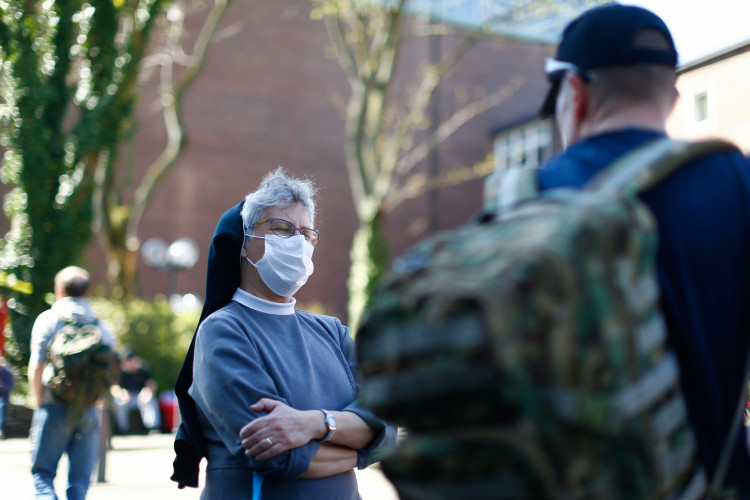Jeremy Rossman, University of Kent
Germany has received a great deal of attention for having a lower death rate for COVID-19 than most comparable European countries. A simple explanation for the low case-fatality rate in Germany is that the country has been testing more people, so they have more confirmed cases for the same number of fatalities.
In many countries, only high-risk patients and the most critically ill are being tested. This results in fairly accurate fatality numbers but dramatically underestimates case numbers, as most cases cause mild illness and would not be tested.
Germany’s robust and rapid testing programme was helped by the use of a distributed network of testing through individual hospitals, clinics and laboratories, instead of relying on tests from a single government resource, as was the case in countries such as the US and the UK. The federated German system allows for more regional autonomy, making it easier for local healthcare systems to coordinate the work of different laboratories.
Distributed testing is now slowly being implemented in many countries.
Consequences of increased testing
The low fatality rate in Germany is not just a matter of the number of tests, but also how the government has acted on the data. Germany’s robust testing programme is coupled with identifying and isolating infected patients. As the virus spreads most effectively from people at early stages of the disease with no or mild symptoms, early identification and isolation would have a disproportionately large impact on the spread of the disease.
Slowing the spread of the virus in Germany has also allowed for increased hospital readiness that helps to reduce fatalities. For example, the number of acute-care beds in Germany is 621 per 100,000 people, compared with Italy’s 275 beds per 100,000 and the UK’s 228 beds per 100,000.
The impact of early interventions and increased preparedness can be seen in the time from the first case to the first fatality of COVID-19. Germany had its first case of coronavirus on January 27, before Italy on January 31, but the first fatality was not recorded until March 9, significantly later than in Italy on Feburary 21. The increased critical care capacity is also probably playing a role in reducing fatalities in Germany.
A question of age?
It has been reported that only 20% of cases in Germany are in people over 60 years old (compared with up to 50% in other European countries, such as Spain).
We know that COVID-19 causes more severe illness and has a higher fatality rate in older people, so the percentage of people over 60 that are infected could dramatically influence the fatality rate. But the median age of the population in Germany is 45.7 years old with 21% of their population being over 65 years old, comparable with that seen in Italy (median age 47.3, 23% over 65 years old) and older than that of the UK (median age 40.5, 19% over 65 years old).
This suggests Germany’s low rate of infection in over 60s is more likely to do with rapid testing, isolation and physical-distancing measures than simply demographics.
In spite of Germany’s strengths around isolation, hospital preparation and so on, it still suffered from the same delayed response as many other countries. Having seen the spread of COVID-19 through China and then Italy, Germany did not enact a nationwide programme of physical distancing measures until March 22.
For comparison, Italy began lockdowns on March 8. This is probably part of the explanation for why Germany’s low number of fatalities has not been accompanied by a low number of cases or a low rate of transmission. Perhaps earlier implementation of distancing protocols would have also reduced the spread of COVID-19 in the country.
Lessons for the rest of the world
Overall, the German response has been a good example of how countries can combat the spread and severity of COVID-19. The core of the German response matches very well with recommendations from the World Health Organization: prepare, test (isolate and treat) and mitigate the spread of the virus.
Many countries are now focusing on the mitigation aspect, employing physical distancing measures to reduce transmission. But without widespread testing, countries won’t know who’s infected, they won’t be able to ensure their isolation, and they won’t be able to control the pandemic.
With many of us doing our part in lockdown and practising physical distancing, it is the responsibility of governments around the world to ensure that this time is effectively used. Containment will not be possible without widespread testing.![]()
Jeremy Rossman, Honorary Senior Lecturer in Virology and President of Research-Aid Networks, University of Kent
This article is republished from The Conversation under a Creative Commons license. Read the original article.






